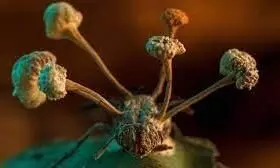
407-million-year-old fossil unveils earliest known fungal disease evidence
text_fieldsResearchers made a momentous discovery within the Natural History Museum of London's collection - a 407-million-year-old fossilised fungus, dubbed Potteromyces asteroxylicola.
It represents the oldest proof of a disease-causing fungus in existence.
This ancient microbe, named after the esteemed mycologist Beatrix Potter, sheds light on the early history of diseases and the pivotal role fungi played in shaping Earth's ecosystems.
Findings are published in the journal Nature Communications, the study titled "A fungal plant pathogen discovered in the Devonian Rhynie Chert".
According to a release by the Natural History Museum, Beatrix Potter's pioneering drawings and study of fungal growth, well ahead of scientific research in some cases, have positioned her as a significant figure in mycology. Potteromyces was unearthed in fossil samples from the Rhynie Chert, a vital geological site in Scotland renowned for preserving an Early Devonian community encompassing plants, animals, bacteria, and fungi.
The recent study, conducted in collaboration with mycologists at the Royal Botanic Gardens, Kew, posits that disease-causing fungi, akin to those responsible for ash die-back affecting the UK's native ash trees, as well as fungi aiding nutrient circulation critical for plant and organism survival, find precedence in Potteromyces.
Dr. Christine Strullu-Derrien, Scientific Associate at the Natural History Museum and lead author of the study, emphasised the significance, stating, "While other fungal parasites were previously identified in this area, this marks the first instance of one causing plant disease. Furthermore, Potteromyces offers a valuable reference point for dating the evolution of different fungal groups, notably Ascomycota, the largest fungal phylum."
"Naming this crucial species after Beatrix Potter is a fitting tribute to her remarkable contributions and dedication to unravelling the mysteries of fungi."












